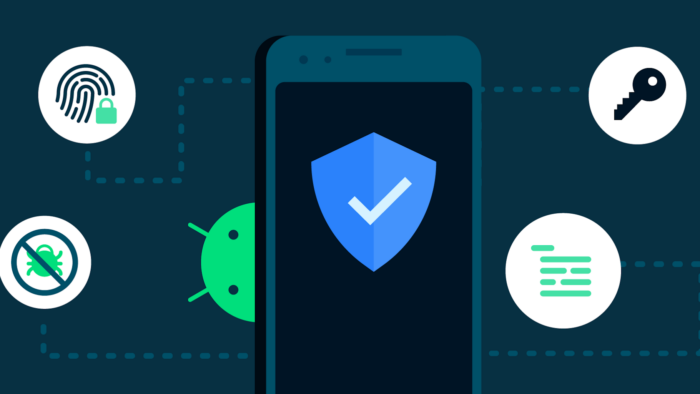Smartphones have become ubiquitous tools, seamlessly integrated into our daily routines. From social connections and communication to mobile payments and financial management, these devices store a wealth of sensitive information. This inherent value, unfortunately, makes them prime targets for theft.
Safeguarding Your Digital Life: Enhanced Security Features in Android 15

Understanding this reality, Google has unveiled a comprehensive security suite within Android 15, designed to deter theft and empower users in the unfortunate event their device goes missing. Let’s delve into these advancements, categorized into preventative measures, automatic safeguards, and improved recovery options.
Thwarting Theft Attempts
- Impeding Factory Resets: A common tactic employed by phone thieves is resetting the device to factory settings, erasing user data and rendering it more easily saleable. Android 15 throws a wrench into this scheme by mandating a Google account password or code during the reset process. Even if a thief manages to wipe the device, its usability remains compromised without legitimate account credentials.
- Guarding Sensitive Apps: Banking applications often house the keys to our financial well-being. A new feature introduces “Private Spaces,” a secure, password-protected environment within your device specifically designed to shield these critical apps from unauthorized access.
- Fortifying System Settings: Modifications to crucial system settings, such as disabling the “Find My Device” network or altering screen lock timeouts, often require an extra layer of security in Android 15. These actions will now necessitate a code, password, or biometric authentication, hindering a thief’s ability to circumvent security measures.
Automatic Protections in Action
Beyond the proactive measures, Android 15 boasts two noteworthy automatic features, available on Android 10 and above from later this year.
- Theft Detection Lock: Leveraging the power of artificial intelligence (AI), Theft Detection Lock analyzes phone movement patterns. When the system detects a scenario suggestive of a snatch-and-grab theft, it automatically locks the screen, safeguarding your personal information.
- Offline Device Lock: Multiple unsuccessful attempts to unlock the phone can be a red flag. Offline Device Lock recognizes this scenario and responds by locking the screen, potentially deterring unauthorized access even without an internet connection.
Regaining Control After Theft
Misplacing a phone can be stressful, especially when faced with the possibility of theft. Android’s “Find My Device” network offers functionality to locate, lock, or erase your device remotely. However, recalling Google account credentials during such moments can be challenging.
- Remote Lock: A Lifeline: Forgetting your Google account details need not be a roadblock to immediate action. Remote Lock allows you to lock the screen of your missing phone using another device. Simply enter your phone number and answer security questions, gaining temporary control until you can access the full suite of features within “Find My Device.” This functionality will also be available on Android 10 and above.
Bolstering Overall Security
While the focus so far has been on theft prevention and recovery, Android 15 goes further by introducing additional security enhancements designed to shield users from a wider range of threats. These improvements will be rolled out throughout the year via Android 15 updates and Google Play Services.
- Threat Detection in Google Play: Malicious applications can pose a significant risk. Android 15 leverages AI to detect suspicious behavior within installed apps. Upon detection, Google’s security team will investigate and alert affected users. This proactive approach helps identify and address potential security breaches.
- Safeguarding One-Time Codes: One-time passwords (OTPs) are crucial for secure logins. To prevent them from falling into the wrong hands, Android 15 ensures these codes no longer appear in app notifications, rendering them inaccessible to potential scammers.
- Reinforcing Restricted Settings: Certain mobile permissions are particularly sensitive, as they grant access to valuable user data. Android 15 strengthens restrictions on these permissions, making it more difficult for malicious actors to exploit vulnerabilities.
- Combating Social Engineering: Social engineering scams often involve tricking users into sharing their phone screens. To combat this, Android 15 introduces features that may prevent the screen from displaying sensitive information like usernames, passwords, or credit card details when prompted for input.
- Warning Against Unencrypted Networks: Data security during communication is paramount. On compatible devices, Android 15 can alert users if they are connected to an unencrypted phone network, potentially exposing calls and messages to interception. This empowers users to make informed decisions regarding network usage.
- Developer Tools for Enhanced Security: Developers will benefit from new tools that can detect screen recording or unauthorized device control. Additionally, these tools can verify Google Play Protect activity and confirm the absence of malware on a user’s device before allowing sensitive actions within specific applications, such as banking apps.

Beyond Android 15: A Holistic Approach to Mobile Security
While Android 15 ushers in a new era of robust security features, safeguarding your mobile device requires a multi-layered approach. Here are some additional considerations to fortify your digital defenses:
- Maintaining a Strong Password: A complex, unique password remains the cornerstone of account security. Avoid using the same password for multiple accounts and consider employing a password manager to generate and store strong passwords securely.
- Enabling Two-Factor Authentication (2FA): 2FA adds an extra layer of protection by requiring a secondary verification step beyond just your password. This could involve a code sent via SMS, an authenticator app, or a fingerprint scan.
- Keeping Software Updated: Software updates often include critical security patches that address newly discovered vulnerabilities. Promptly installing updates for your operating system and apps is essential to maintain optimal protection.
- Exercising Caution When Downloading Apps: Only download applications from trusted sources like the Google Play Store. Read reviews and ratings before installing, and be wary of apps that request excessive permissions.
- Being Wary of Phishing Attempts: Phishing scams attempt to lure users into revealing personal information or clicking on malicious links. Be cautious of unsolicited emails, text messages, or social media posts, and never share sensitive information without verifying the sender’s legitimacy.
- Utilizing a Mobile Security Solution: Consider using a reputable mobile security app that offers additional features like malware detection, secure browsing, and anti-theft protection.
Responsible Digital Habits for a Secure Future
Beyond the technical measures, cultivating responsible digital habits plays a crucial role in safeguarding your mobile device and the data it stores. Here are some key practices to consider:
- Avoiding Public Wi-Fi for Sensitive Activities: Public Wi-Fi networks are often unsecured, making them vulnerable to eavesdropping. Refrain from conducting financial transactions, logging into sensitive accounts, or transmitting confidential information while connected to public Wi-Fi.
- Being Mindful of What You Share Online: Oversharing personal information online can increase your susceptibility to targeted attacks. Exercise caution about what you post on social media and other online platforms.
- Backing Up Your Data Regularly: Regular data backups ensure you have a copy of your critical information in case of theft, loss, or device failure. Cloud storage or a physical backup drive are suitable options.
- Reporting Suspicious Activity: If you encounter a suspicious app, website, or email attempt, report it to the appropriate authorities. This helps protect not only yourself but also the broader online community.
By implementing these security measures and fostering responsible digital habits, you can significantly reduce the risk of falling victim to cyber threats and ensure the continued safekeeping of your valuable mobile data. Remember, security is an ongoing process, and vigilance is key in today’s ever-evolving digital landscape.





